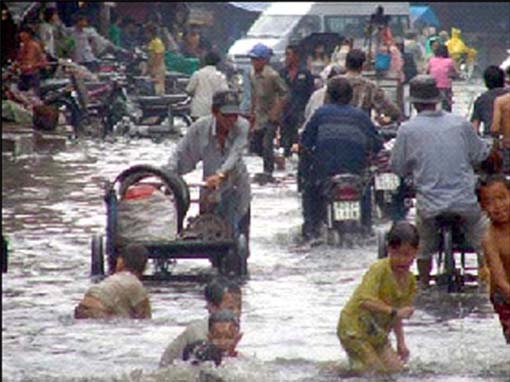Regional planning in Vietnam (Adrian Atkinson)
In April-May 2007, Adrian Atkinson was commissioned directly by the Ministry of Construction to work with the Southern Sub-Institute for Urban and Rural Planning on a kind of mid-term evaluation of the draft plan for Ho Chi Minh City and six surrounding provinces and to recommend adjustments in methodology or content that I felt could improve the plan. The input was two months long.
 |
The Vietnamese government passed a new planning law in 2005 and followed this up with detailed regulations. The main thrust of the law is to promote regional planning that has seen some initiatives in past years but which is now an official part of the planning system. However, this remains a little confused because a regional plan in this context can be anything from a highway corridor to a province (engulfing the former provincial plans) to groups of provinces. Furthermore, regions that have been defined recently sometimes overlap – for instance that of Ho Chi Minh City overlaps with the Mekong Delta and the Central Highlands all of which are currently in process of having plans made for them.
Planning generally in Vietnam is still heavily influenced by inherited Soviet procedures and assumptions. Two things stand out: they are heavily skewed towards industrial development with little regard to social needs or consequences and they respond poorly to the fact that in 1986 the country introduced market mechanisms that have resulted in widespread decisions that disregard the planning framework. This has reached extreme proportions and much external advice focuses on the weaknesses of the planning system and reforms that will need to be made if planning is to have any effective meaning. Inevitably my advice included a heavy dose of this medicine. Flexibility, yes; but in the end the capacity to direct core developments and restrict inappropriate development must be in place.
 |
Two wholly new topics also arose, namely the impacts of global warming and probable sharp rises in energy prices in the near to mid-term future. How should the plan respond to these? In the first place and thanks to a recent World Bank report1 estimating land loss and economic and demographic impacts of future sea-level rises, this topic was dealt with as a major theme of the consultancy. Vietnam stands to suffer very seriously from even very small rises in sea level. This is because much of the Mekong Delta that is the rice-bowl of Vietnam lies less than one metre above sea level. Over half Ho Chi Minh City is also below one metre above sea-level! The World Bank is talking a lot these days about ‘Adaptation Planning’ and here is an example where the regional plan really should be taking the matter seriously into consideration.
In general my advice included taking a more dynamic view of the future (we carried out a scenario-building exercise to replace the rigid forecasting that had hitherto been the basis for the plan). Social as well as environmental impacts of development need to be taken more seriously into account (and in the process acknowledge and start to develop and implement a realistic housing policy, including informal settlement upgrading). But the greatest difficulty is presented by the probable consequences of sea-level rise that imply the need for a substantial dispersion of urban development onto higher land in the sub-region. This, above all, challenges the planning system to develop teeth to be able to direct development. The results of my inputs were presented in the Ministry in Hanoi and it was discomforting news where the government – like governments around the world – is reluctant to recognise serious problems ahead and to start dictating to the electorate what they should be doing (shades of the re-introduction of the command economy). We will see in the coming years if serious adjustments can be made in the plan implementation process as the consequences of global warming become more evident!
- ________________
1 Dasgupta, S., Laplante, B, Meisner, C., Wheeler, D. and Yan, JP (2007) The Impact of Sea Level Rise on Developing Countries: A Comparative Analysis. World Bank Policy Research Working Paper 4136, World Bank, Washington DC (available from the internet).
